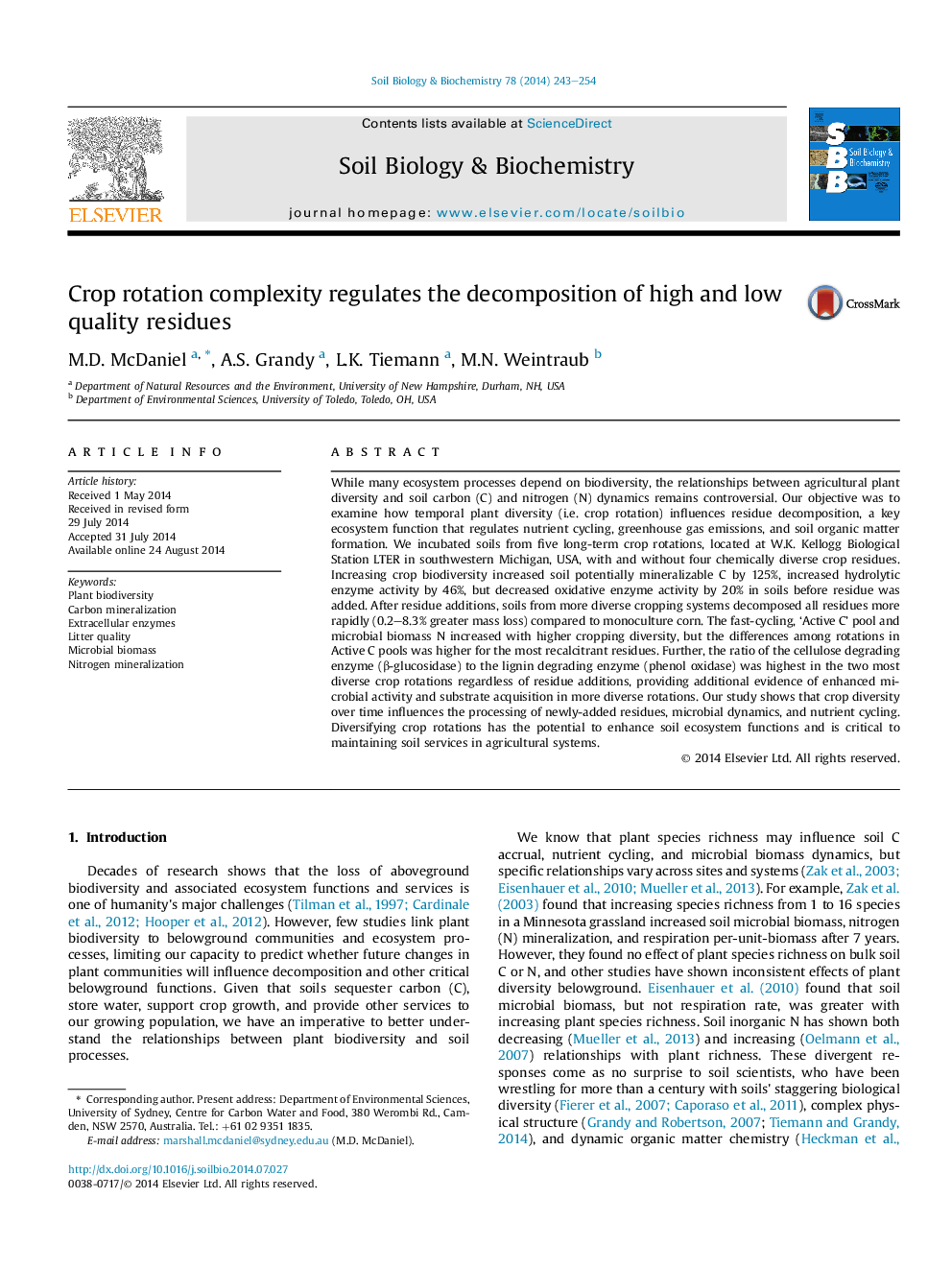| کد مقاله | کد نشریه | سال انتشار | مقاله انگلیسی | نسخه تمام متن |
|---|---|---|---|---|
| 2024590 | 1542606 | 2014 | 12 صفحه PDF | دانلود رایگان |
• Crop biodiversity increased soil available C and hydrolytic enzyme activities.
• Increasing crop biodiversity decreased oxidative enzyme activity.
• Crop rotation soil decomposed all residues more rapidly than monoculture corn soil.
• Crop biodiversity increased soil microbial biomass, but depended on the residue.
• Biodiversity increased labile-to-recalcitrant enzyme ratio, regardless of residue type.
While many ecosystem processes depend on biodiversity, the relationships between agricultural plant diversity and soil carbon (C) and nitrogen (N) dynamics remains controversial. Our objective was to examine how temporal plant diversity (i.e. crop rotation) influences residue decomposition, a key ecosystem function that regulates nutrient cycling, greenhouse gas emissions, and soil organic matter formation. We incubated soils from five long-term crop rotations, located at W.K. Kellogg Biological Station LTER in southwestern Michigan, USA, with and without four chemically diverse crop residues. Increasing crop biodiversity increased soil potentially mineralizable C by 125%, increased hydrolytic enzyme activity by 46%, but decreased oxidative enzyme activity by 20% in soils before residue was added. After residue additions, soils from more diverse cropping systems decomposed all residues more rapidly (0.2–8.3% greater mass loss) compared to monoculture corn. The fast-cycling, ‘Active C’ pool and microbial biomass N increased with higher cropping diversity, but the differences among rotations in Active C pools was higher for the most recalcitrant residues. Further, the ratio of the cellulose degrading enzyme (β-glucosidase) to the lignin degrading enzyme (phenol oxidase) was highest in the two most diverse crop rotations regardless of residue additions, providing additional evidence of enhanced microbial activity and substrate acquisition in more diverse rotations. Our study shows that crop diversity over time influences the processing of newly-added residues, microbial dynamics, and nutrient cycling. Diversifying crop rotations has the potential to enhance soil ecosystem functions and is critical to maintaining soil services in agricultural systems.
Journal: Soil Biology and Biochemistry - Volume 78, November 2014, Pages 243–254
